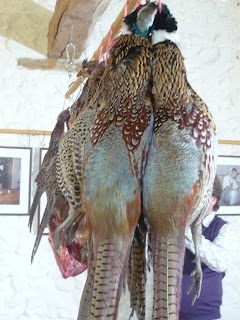Burnished copper vessels (stainless steel inside), bags of Weyermann malt jostling to be hoisted, the low susurration of voices, the sharp chink and high scrape of knife on plate, the satisfaction of a beer well drained. Another day, another brewpub. This time it’s Bayerischer Bahnhof in Leipzig, home of that most elusive of German beers: Leipziger Gose. Top-fermented, salt and coriander added plus lactic acid, making for a tart and appetising sourness, this is yet another German beer the Purity Law forgot, a native beer of Leipzig, which nearly died out in the 1960s. ‘Do you want a drink?’ Yes please. Brewmaster Matthias Richter hands me a tall 500ml glass filled with a pale yellow cloudy beer. ‘This is our Gose,’ he says. I’ve waited a long time for this, ever since reading about it in one of Michael Jackson’s books. Here goes — and I remember the hotel manager’s question when I said I was looking for Gose, ‘you will drink it on its own?’ Said with an evident bemusement. Of course I will and I’m glad I am. On the nose: a flurry of salty, delicately spicy, fresh ozone-like notes; the palate is spicy and delicately salty, with the latter condiment seemingly adding to the body of the mouthfeel (there’s a tingle of salt but it’s out there on the edge of the known universe of taste); a lemon flavoured boiled sweet character also takes a bow. The end contains more boiled lemon sweetness, alongside a saltiness and spice of coriander. It is damned refreshing and is one of those glasses of beer at which you cannot but help make eyes and ask: ‘where have you been all my life?’ Richter also makes a robust and bittersweet Pils, plus a doppel porter and a Dunkel, while a further project of his involved a glass of Berliner Weiss into which Brett has been added. This had an earthy barnyard nose while bananas hovered in the background — it was a great Mexican standoff between sweetness and sourness. The doppel porter was a revelation though — think Schwarzbier, porter and Dunkel all rolled into one big creamy, chocolaty, orangey, spirituous glass of goodness. ‘Am I still in Germany?’ I asked. A massive plate of ham hock, cabbage and dumplings assured me that yes I was. And I was glad.
The next night saw me at Gosenschenke ohne Bedenken, which until the arrival of Bayerischer Bahnhof was the only place where you could drink Gose. It was here that the words of the hotel manager managed to come back and haunt me, but that, as they say, is a story for another time.






